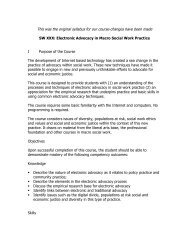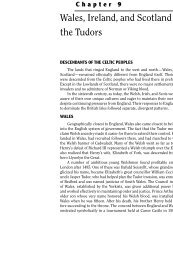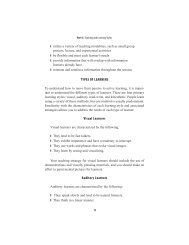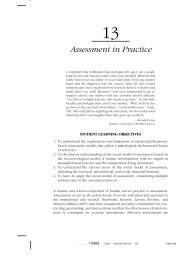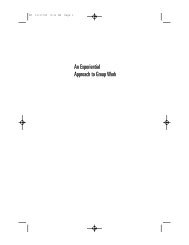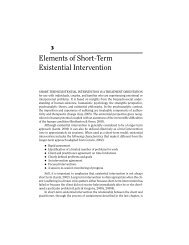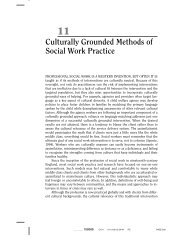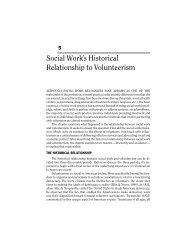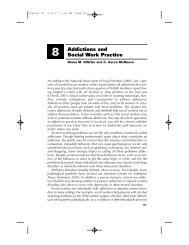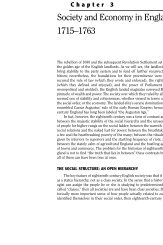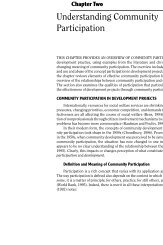Chapter 6 Medieval British Society, 1066–1485 - Lyceum Books
Chapter 6 Medieval British Society, 1066–1485 - Lyceum Books
Chapter 6 Medieval British Society, 1066–1485 - Lyceum Books
Create successful ePaper yourself
Turn your PDF publications into a flip-book with our unique Google optimized e-Paper software.
124 Part II Norman Britain<br />
granted by royal charter. Itinerant traders brought luxury goods and other unusual<br />
items, often imported, to these fairs, which were held only once or twice a year, and<br />
families might travel some distance to purchase commodities that were not ordinarily<br />
available. Sometimes fairs were held some distance outside towns because<br />
of the possibility of disturbances at them. At Cambridge, for example, the famous<br />
Stourbridge Fair took place at Barnwell, a village several miles away from the town<br />
center. Special courts, called courts of pie powder (the phrase is derived from the<br />
French pieds poudrés or “dusty feet”), were sometimes held to deal speedily, on the<br />
spot, with disputes that arose at these fairs.<br />
Foreign goods were sold at fairs, as well as at settled locations in the larger cities<br />
like London and York. Luxurious textiles, including silks, velvets, and cloth of gold,<br />
were the most valuable imports, but French wines did not lag far behind. (Water was<br />
not thought to be a healthful drink in the Middle Ages; the poor drank beer or ale<br />
and the rich drank wine.) Furs from the Baltic were prized, as were metalwork from<br />
Germany and the spices, rare fruits, sugar, and rice that came from more distant<br />
lands, often aboard Italian galleys. The <strong>British</strong> exported wool, grain, fi sh, and dairy<br />
products to help pay for these imports.<br />
The Wool Trade<br />
Throughout the Middle Ages England’s most important export was wool. Even<br />
poor peasants might own a few sheep, but most wool came from the substantial<br />
estates held by the gentry and aristocracy. Church lands, especially those owned by<br />
monasteries, also provided pasture for large fl ocks. St. Peter’s abbey in Gloucester,<br />
for instance, owned more than 10,000 sheep in 1300, while the total number in England<br />
is thought to have been between fi fteen and eighteen million. By the end of the<br />
thirteenth century, England was exporting more than thirty thousand sacks of wool a<br />
year—nearly 6,000 tons. Wool produced in England was made up into fi nished cloth<br />
on the Continent, primarily in Flanders, and large quantities of cloth were imported<br />
by the residents of the <strong>British</strong> Isles. Luxury fabrics, of higher quality than those produced<br />
in England, were especially popular with members of the aristocracy.<br />
The wool trade was handled largely by foreign merchants. Italians, some of<br />
them papal tax collectors, dominated during the earlier Middle Ages. In later centuries<br />
German traders from the Hanseatic League were also important. They secured<br />
special privileges in England, including the right to have their own guildhall in<br />
London as well as exemption from some customs duties. During the fourteenth<br />
century, English merchants controlled more of the wool trade themselves; they<br />
gained royal charters that allowed them to set up monopolistic centers on the Continent,<br />
called staples, as centers of their activity. The staple at Calais was especially<br />
important. Trading here was regulated by a small group of Englishmen known as<br />
merchants of the staple.<br />
The wool trade declined during the second half of the fourteenth century, in<br />
part because of a great increase in the quantity of cloth being made within England.<br />
Indeed, England began to export fi nished cloth as well as raw wool. Trade with the



